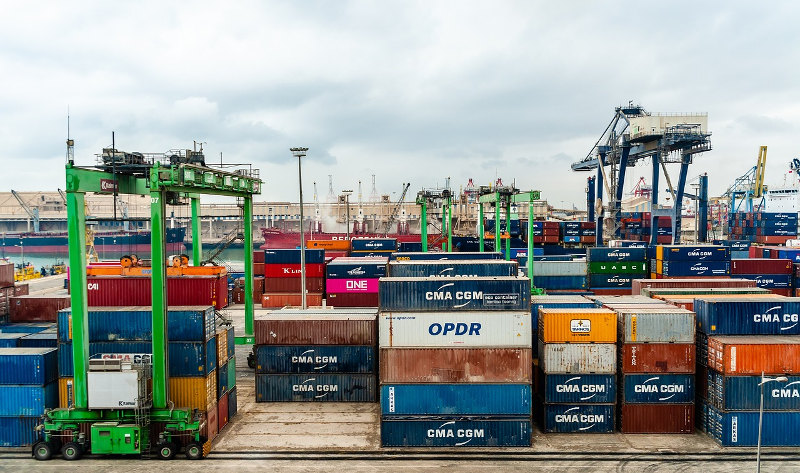Economic Order Quantity Calculator
Optimize inventory management in your company with Calcopolis.
Table of Contents
- What is the Economic Order Quantity indicator?
- Why is order quantity such a big deal?
- How to calculate Economic Order Quantity?
- The economic order quantity formula
- Disadvantages of EOQ
- How to improve EOQ?
- Comparison with Other Inventory Management Techniques
- Just-In-Time (JIT) Inventory Management
- ABC Analysis
- Differences and Synergies
- Summary
What is the Economic Order Quantity indicator?
Economic Order Quantity (EOQ) is the metric that tells you the best viable number of items you need to order to maintain sales most cost-effectively.
This indicator aims to find the balance between the stock value and the inventory management cost.
Why is order quantity such a big deal?
For the companies that manage an extensive inventory of different items, it is costly to keep a high stock. It not only requires a lot of equity to be invested into the stock, but the high quantity of goods requires significant infrastructure in the form of the warehouse and the staff.
Therefore most companies try to find optimal quantities of each particular item in order to maintain sales without driving costs too high.
Economic Order Quantities is a methodology for calculating the exact number of items the company needs to keep in stock in order to run the business with continuous product availability.
How to calculate Economic Order Quantity?
EQQ takes into account the current sales performance in the form of annual demand for the product and costs related to transportation and warehouse management.
The economic order quantity formula
EQQ = (2 * Demand * Order_Cost / Holding_Cost)^(½)
Where:
- Demand - demand for this particular item for a given period.
- Order_costs - represents the total costs of bringing a single item to your warehouse
- Holding_costs - all the costs you need to cover while keeping items in stock
Take note that the actual purchase price of the products is not considered. The only costs that matter are transportation, product verification, and warehouse upkeep.
The demand is typically calculated for a year, but it could be calculated for a shorter period, for example, a quarter or even a month.
This way, you will not only need to keep the stock for an entire year but will be able to consider the seasonality by calculating the demand using trends from the previous years.
Orders costs comprise not only transportation costs but all the costs the company needs to cover in order to bring the goods and put them on the warehouse storage shelves. So apart from transportation, there are duty fees, transportation insurance, and even costs of delivery verification of your in-house staff.
Holding costs should not only cover the warehouse rental but all the expenses required to keep the warehouse running, like electricity bills, staff, insurance, etc.
Of course, tracking such costs per single item isn't easy. The common practice is to divide the total warehouse costs by available pallet spaces and then multiply the value by the number of pallets occupied by this particular item. For example:
Item_holding_cost = (Total_warehouse_costs / Total_pallets_spaces) * Used_Pallets
Depending on your accounting policy, you could calculate the costs of financing the stocks into the holding cost.
Disadvantages of EOQ
Although EOQ is a simple and handy methodology, it has some limitations.
- For starters, it assumes that the demand will remain constant during the holding period. It is rarely the case due to seasonality, company growth, and market trends. You can address this by calculating Economic Order Quantity for shorter periods, but still, it is only an estimation.
- The warehouse upkeep costs are also considered constant, but during times of high inflation, the costs may vary in time.
- Since the purchase prices are not part of the EQQ formula, the wholesale discounts do not impact the calculation. It is crucial for some industries due to extensive discounts for high volumes. In many cases, discounts may strongly affect the viability of EOQ estimations.
How to improve EOQ?

While the EOQ can be a useful indicator for inventory management, there are several ways to improve its accuracy and effectiveness:
-
Use accurate lead time data:
The EOQ calculation requires accurate lead time data to ensure that the optimal order quantity is sufficient to cover demand during the lead time. Improving the accuracy of lead time data by tracking it over time and incorporating any changes or variations can improve the effectiveness of the EOQ. -
Account for demand variability:
The EOQ assumes that demand is constant and predictable, but in reality, demand can be volatile and unpredictable. To account for this, safety stock can be added to the EOQ calculation to ensure that the optimal order quantity is sufficient to cover unexpected spikes in demand. -
Incorporate cost data:
The EOQ formula accounts for the cost of holding inventory, but it does not take into account other costs associated with ordering, such as shipping or handling costs. Incorporating these costs into the EOQ calculation can provide a more accurate picture of the total cost of holding and ordering inventory. -
Consider the batch size:
The EOQ assumes that inventory is ordered and received in a single batch, but in reality, it may be more efficient to order inventory in smaller batches to reduce lead time and improve inventory turnover. Incorporating batch size into the EOQ calculation can provide a more accurate picture of the optimal order quantity. -
Regularly preform the EOQ analysis:
The optimal order quantity can change over time due to changes in demand, lead time, or other factors. Regularly reviewing and updating the EOQ calculation can ensure that inventory levels are optimized, and costs are minimized.
Comparison with Other Inventory Management Techniques
Inventory management is a critical component of supply chain management that involves ordering, storing, and using a company's inventory. While the Economic Order Quantity (EOQ) model offers a quantitative method to determine the ideal order size to minimize the costs associated with ordering and holding inventory, it's one of many strategies businesses can employ. Here's how EOQ compares to other popular inventory management techniques:
Just-In-Time (JIT) Inventory Management
Just-In-Time (JIT) inventory management is a strategy that aims to increase efficiency and decrease waste by receiving goods only as they are needed in the production process, thereby reducing inventory costs. Unlike EOQ, which focuses on finding the optimal order quantity to minimize costs, JIT focuses on reducing inventory levels to the bare minimum.
This method requires precise planning and strong supplier relationships to avoid stockouts. While EOQ provides a buffer of inventory that accounts for variability in demand and lead times, JIT operates with little to no safety stock, making it more susceptible to disruptions in the supply chain.
ABC Analysis
ABC analysis is an inventory categorization technique that divides inventory into three categories (A, B, and C) based on their importance. 'A' items are very important for an organization due to their high value, 'B' items are less important, and 'C' items are the least important. The ABC analysis focuses on prioritizing the management of different inventory types to optimize resources and improve inventory control.
Unlike EOQ, which calculates the most cost-effective order quantity across all items, ABC analysis helps businesses understand which items require more attention and resources, allowing for a more nuanced inventory management approach.
Differences and Synergies
-
Application Scope: EOQ is a universally applicable formula that aims to minimize costs related to ordering and holding inventory without considering the item's importance or usage frequency. In contrast, JIT and ABC analysis are more strategic, focusing on reducing waste and prioritizing resources, respectively.
-
Flexibility and Risk: EOQ's reliance on steady demand and predictable costs can be a limitation in volatile markets. JIT offers greater flexibility by aligning orders closely with production needs, but at the risk of supply chain disruptions. ABC analysis mitigates risk by identifying critical inventory items, but it requires continuous monitoring and adjustment.
-
Complementarity: These techniques can complement each other within a comprehensive inventory management strategy. For example, a company might use EOQ to determine order quantities for 'C' category items in an ABC analysis, while adopting JIT principles for 'A' category items to minimize holding costs and improve cash flow.
While EOQ provides a mathematical approach to optimizing inventory levels, JIT and ABC analysis offer strategic frameworks for managing inventory based on timing and item importance. The choice of inventory management technique should align with a company's operational priorities, supply chain stability, and the nature of its inventory. Combining elements of these methods can lead to a more resilient and efficient inventory management system.
Summary
The right stock policy may enormously increase the company's profitability and net margin, which translates to a higher margin of safety.


